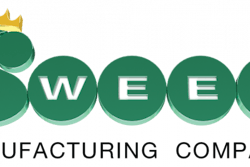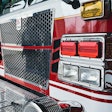
To likely no surprise for anyone in the pet food industry (or anyone reading pet food-related news, for that matter), Salmonella contamination was behind 44% of pet food recalls in the U.S. from 2017 through November 2023, according to Food and Drug Administration (FDA) data. Of 126 class I and class II recalls during that period, 56 were due to Salmonella. The next most common hazard, Listeria contamination, contributed to only 14 recalls.
The data was shared by Jennifer Dorick, Ph.D., corporate product safety manager for Darling Ingredients, during a presentation to renderers organized by Kemin Nutrisurance, another ingredient company. (Kemin had also invited me to speak during this seminar, called Evolve 2024.)
In contrast, Dorick said, recalls for animal feed were mainly due to various mineral or other overages or deficiencies, or to mycotoxin contamination. For example, the most common hazard for animal feed recalls from 2017-2023 was elevated non-protein nitrogen, contributing to 18 recalls of a total of 90, followed closely by elevated copper at 15 and elevated monensin at 14.
This difference helps illustrate the intense focus on Salmonella in pet food by FDA since passage of the Food Safety Modernization Act in 2011 — in fact, the agency’s zero tolerance for Salmonella in any pet food facility or product, despite the fact that there are more than 2,200 serotypes of the bacteria and it’s essentially everywhere.
That’s my analysis of the data, not Dorick’s; her presentation was about food safety challenges for renderers and she mentioned the contrast only in passing. Yet it definitely stood out to me.
Why Salmonella is so likely to spur a pet food recall
FDA defines a class I recall as a “situation in which there is a reasonable probability that the use of or exposure to a violative product will cause serious adverse health consequences or death,” while a class II recall refers to potential temporary medically reversible adverse health consequences or “where the probability of serious adverse health consequences is remote.”
The detection of even the most minute amount of Salmonella in a pet food facility often triggers a class I or II recall not because of a risk of adverse health effects to pets — dogs and cats tend not to become infected with Salmonella or suffer very minor effects if they do — but because of the risk to human health, since people often handle pet food and treats.
Indeed, recently released results of an investigation into Salmonella-contaminated pig ear dog chews from 2015-2019 highlighted the health risk to humans, with 154 people suffering infections during that time. Of those patients, 20% were children under 5 years old, who also accounted for six hospitalizations, as did six people over 65 years old. Young children and the elderly are often more susceptible to infections because their immune systems are not as robust.
Thus the focus (some in the industry might say “obsession”) by FDA on Salmonella in pet food and treats. And, consequently, the comparatively larger number of recalls due to Salmonella versus any other cause.
Pet food recalls do happen for other reasons
To be clear, pet food recalls also happened from 2017-2023 for many other reasons, including some of the same hazards affecting animal feed, such as contamination by various mycotoxin or insufficient or elevated amounts of various substances (vitamin D, thiamine, etc.). Yet the number of pet food recalls due to any other hazard was so much lower than the number for Salmonella; it’s not even close.
It’s also interesting that the list of hazards associated with animal feed recalls does not include any bacteria; for pet food recalls, the list also includes C. botulism (two recalls) and E. coli (one recall), in addition to Salmonella and Listeria. Nine recalls were due to a combination of Salmonella and Listeria presence.
Unlike Salmonella and even Listeria, Botulism and E. coli can also affect pets; but it’s the risk to humans that places the first two contaminants — particularly Salmonella — so prominently on FDA’s radar. And it’s another example of pet food’s status as a key consumer goods category.


















